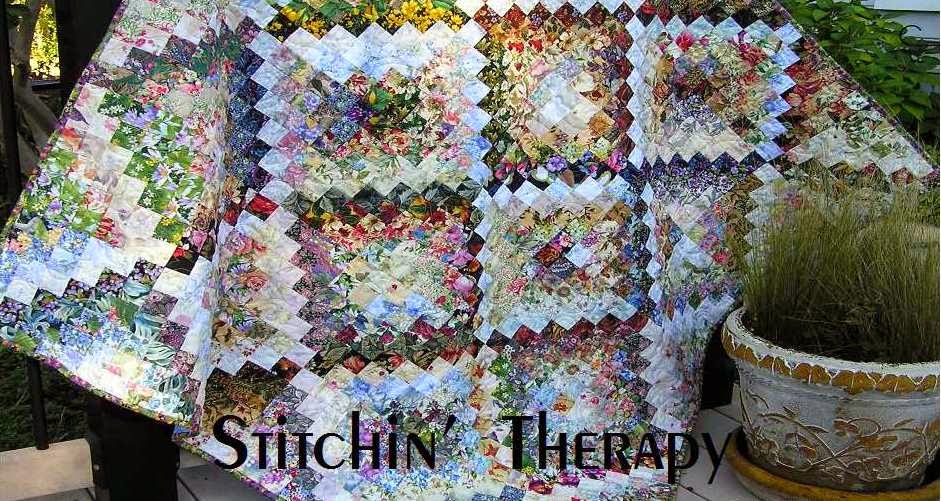We began today by laying the flannel out and ironing it flat on the floor. Then the panel with the slat support was laid face down on it. Out came the staple gun--another tool-- and each side was stapled in place on the wood slats. On the bottom corners I cut out a bit of the corner to eliminate the bulk. I cut about a 3 inch square bit out. We added felt pads, as bumper guards, at the bottom corners and across the center slat.

The upper corners posed a small problem, as we could not staple them like the bottom ones because of the hanger cleat. So I decided to just roll and tuck the flannel down as best I could and pin in place. I used 3 T-pins and stuck them straight down into the foam panel.
And here it is an
 d already in use! Now, I only required a step stool to reach the top. Seriously, I will be able to pin up an entire quilt now, rather than just one section at a time. So I am very happy....and a huge thank you to my husband for his design and time to make this happen.
d already in use! Now, I only required a step stool to reach the top. Seriously, I will be able to pin up an entire quilt now, rather than just one section at a time. So I am very happy....and a huge thank you to my husband for his design and time to make this happen.Next project.....I have just cut the squares to begin a one fabric quilt. It is from the book "Wonderful one fabric quilts". It is a black, grey and white wallpaper stripe fabric. Check back and see how it goes.









 One final note...when I create a label I always do a test print on paper before printing on the Printed Treasures. Then I have a file of ideas for label styles and graphics. I use these when I do a guild program presentation (along with my Bee group members) for other guilds.
One final note...when I create a label I always do a test print on paper before printing on the Printed Treasures. Then I have a file of ideas for label styles and graphics. I use these when I do a guild program presentation (along with my Bee group members) for other guilds. 